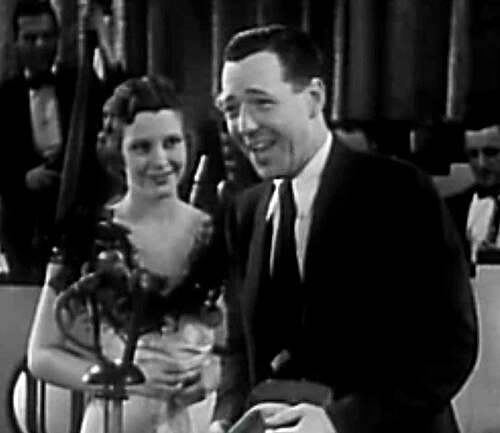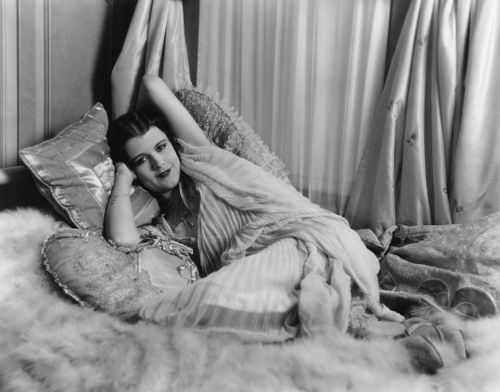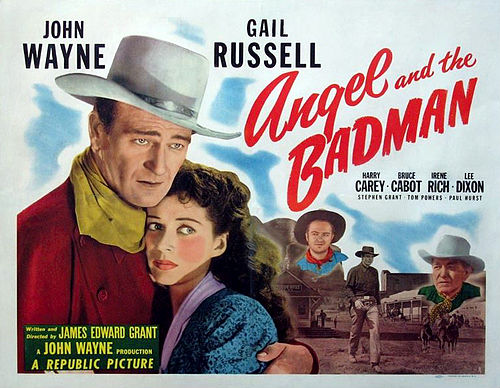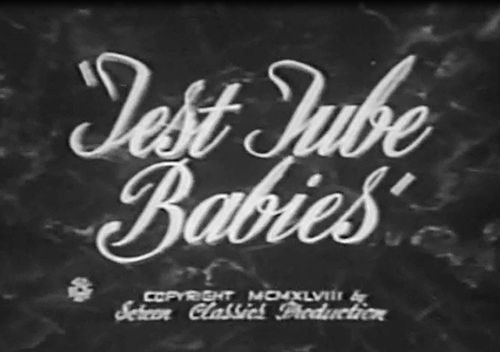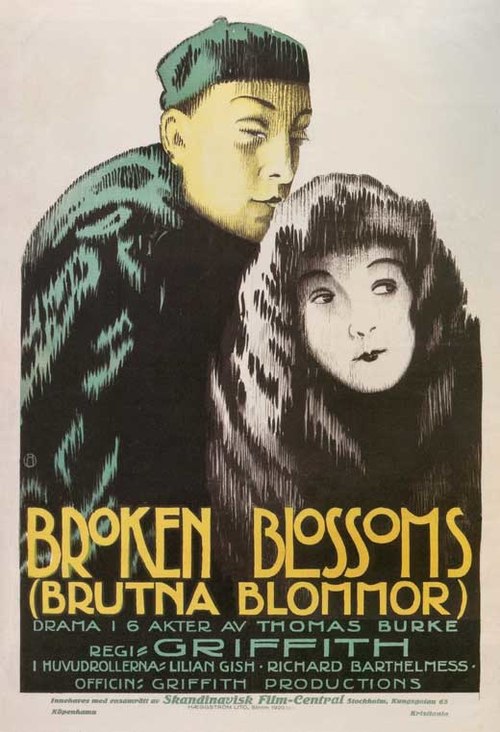
Other Versions of this Movie
Nosferatu, eine Symphonie des Grauens (A Symphony of Horror)
This is the most complete version available (just over 93 minutes) as this movie was demanded by Bram Stokers widow to be destroyed after winning 2 lawsuits in the mid & late 1920's. Tinted scenes and beautiful quality. I have seen the current version here at archive.org and decided to post this one as it is of much better video quality, although the music is a nit hokey. Enjoy this classic horror with the very creepy Max Schrek as the (IMHO) best vampire ever to waltz across the silver screen. (IMDB.COM Description) An unauthorized production of Bram Stoker's work (The legal heirs didn't give their permission), so the names had to be changed. But this wasn't enough: The widow of Bram Stoker won two lawsuits (1924 and 1929) in which she demanded the destruction of all copies of the movie, however happily copies of it were already too widespread to destroy them all. Later, Universal studios could break her resistance against this movie. Count Orlok's move to Wisburg (Obviously the real "Wismar") brings the plague traceable to his dealings with the Realtor Thomas Hutter, and the Count's obsession with Hutter's wife, Ellen the only one with the power to end the evil. DVD Empire Description A Symphony Of Horror A long time ago in middle Europe, a decrepit, forbidding castle stood... Casting an ominous shadow over the townspeople who dare not look upon it, the unholy dwelling is home to one Count Orlok (Max Schreck) , an undead night creature with a taste for human blood. Into this picture steps Hutter, an unwary traveler who visits the Count. He carries with him the deed for a property Orlock wishes to buy in Hutter's home town of Wisborg. That night, in preparation for the long sea voyage ahead, the vampire hastily loads his coffin aboard ship and waits... Once at sea, Orlock bares his fangs and upon arrival in Wisborg, leaves behind a floating morgue. Now, preparing to feast on the citizens, the cadaveous Count, prowls the darkness as the eerie Nosferatu.
File:NosferatuShadow.jpg
(translated as Nosferatu: A Symphony of Horror; or simply Nosferatu) is a 1922 German Expressionism horror film, directed by F. W. Murnau, starring Max Schreck as the vampire Count Orlok.
The film, shot in 1921 and released in 1922, was an unauthorized adaptation of Bram Stoker's Dracula, with names and other details changed because the studio could not obtain the rights to the novel (for instance, "vampire" became "Nosferatu (word)" and "Count Dracula" became "Count Orlok"). Stoker's heirs sued over the adaptation, and a court ruling ordered that all copies of the film be destroyed. However, one print of Nosferatu survived, and the film came to be regarded as an influential masterpiece of cinema.
Plot
Thomas Hutter lives in the fictitious German city of Wisborg. His employer, Knock, sends Hutter to Transylvania to visit a new client named Count Orlok. Hutter entrusts his loving wife Ellen to his good friend Harding and Harding's sister Annie, before embarking on his long journey. Nearing his destination in the Carpathian mountains, Hutter stops at an inn for dinner. The locals become frightened by the mere mention of Orlok's name and discourage him from traveling to his castle at night, warning of a werewolf on the prowl. The next morning, Hutter takes a coach to a high mountain pass, but the coachmen decline to take him any further than the bridge as nightfall is approaching. A black-swathed coach appears after Hutter crosses the bridge and the coachman gestures for him to climb aboard. Hutter is welcomed at a castle by Count Orlok. When Hutter is eating dinner and accidentally cuts his thumb, Orlok tries to suck the blood out, but his repulsed guest pulls his hand away.Hutter wakes up to a deserted castle the morning after and notices fresh punctures on his neck, which he attributes to mosquitoes or spiders. That night, Orlok signs the documents to purchase the house across from Hutter's own home. Hutter writes a letter to his wife and gets a coachman to send it. Reading a book about vampires that he took from the local inn, Hutter starts to suspect that Orlok is Nosferatu, the "Bird of Death." He cowers in his room as midnight approaches, but there is no way to bar the door. The door opens by itself and Orlok enters, his true nature finally revealed, and Hutter falls unconscious. The next day, Hutter explores the castle. In its crypt, he finds the coffin in which Orlok is resting dormant. Hutter becomes horrified and dashes back to his room. Hours later from the window, he sees Orlok piling up coffins on a coach and climbing into the last one before the coach departs. Hutter escapes the castle through the window, but is knocked unconscious by the fall and awakes in a hospital.
When he is sufficiently recovered, he hurries home. Meanwhile, the coffins are shipped down river on a raft. They are transferred to a schooner, but not before one is opened by the crew, revealing a multitude of rats. The sailors on the ship get sick one by one; soon all but the captain and first mate are dead. Suspecting the truth, the first mate goes below to destroy the coffins. However, Orlok awakens and the horrified sailor jumps into the sea. Unaware of his danger, the captain becomes Orlok's latest victim when he ties himself to the wheel. When the ship arrives in Wisborg, Orlok leaves unobserved, carrying one of his coffins, and moves into the house he purchased. The next morning, when the ship is inspected, the captain is found dead. After examining the logbook, the doctors assume they are dealing with the Plague (disease). The town is stricken with panic, and people are warned to stay inside.
There are many deaths in the town, which are blamed on the plague. Knock, who had been committed to a psychiatric ward, escapes after murdering the warden. The townspeople give chase, but he eludes them by climbing a roof, then using a scarecrow. Meanwhile, Orlok stares from his window at the sleeping Ellen. Against her husband's wishes, Ellen had read the book he found. The book claims that the way to defeat a vampire is for a woman who is pure in heart to distract the vampire with her beauty all through the night. She opens her window to invite him in, but faints. When Hutter revives her, she sends him to fetch Professor Bulwer. After he leaves, Orlok comes in. He becomes so engrossed drinking her blood that he forgets about the coming day. When a rooster crows, Orlok vanishes in a puff of smoke as he tries to flee. Ellen lives just long enough to be embraced by her grief-stricken husband. The last scene shows Count Orlok's ruined castle in the Carpathian Mountains, symbolizing the end of Count Orlok's reign of terror.
Cast
- Max Schreck as Count Orlok
- Gustav von Wangenheim as Jonathan Harker
- Greta Schröder as Mina Harker
- Alexander Granach as Renfield
- Ruth Landshoff as Lucy Westenra
- Wolfgang Heinz (actor) as First Mate of The Empusa
- Georg H. Schnell as Arthur Holmwood
- John Gottowt as Abraham Van Helsing
- Gustav Botz as John Seward
- Max Nemetz as The Captain of The Empusa
- Heinrich Witte as guard in asylum
- Guido Herzfeld as innkeeper
- Karl Etlinger as student with Bulwer
- Hardy von Francois as hospital doctor
- Fanny Schreck as hospital nurse
Production
's yard in Wismar; this photograph is from 1970.}}}Nosferatu was the only production of Prana Film,<></> founded in 1921 by Enrico Dieckmann and Albin Grau. Grau had the idea to shoot a vampire film; the inspiration arose from Grau's war experience: in the winter of 1916, a Serbian farmer told him that his father was a vampire and one of the Undead.<></>
Diekmann and Grau gave Henrik Galeen the task to write a screenplay inspired from Bram Stoker's 1897 novel Dracula, despite Prana Film not having obtained the film rights. Galeen was an experienced specialist in Dark romanticism; he had already worked on Der Student von Prag (The Student of Prague (1913 film)) in 1913, and the screenplay for Der Golem, wie er in die Welt kam (The Golem: How He Came into the World) (1920). Galeen set the story in a fictional north German harbour town named Wisborg and changed the character names. He added the idea of the vampire bringing the plague to Wisborg via rats on the ship. He left out the Van Helsing vampire hunter character. Galeen's German Expressionism<></> screenplay was poetically rhythmic, without being so dismembered as other books influenced by literary Expressionism, such as those by Carl Mayer. Lotte Eisner described Galeen's screenplay as "" ("full of poetry, full of rhythm").<!-- to add: Dieckmann and Grau get director Murnau; Grau does art direction, sets and costume; music by Hans Erdmann; lead the unknown Max Schreck; other cast from actors schooled by Max Reinhardt ... -->
File:Lübeck-Salzspeicher an der Trave.JPG in Lübeck served as the set for Orlok's house in Wisborg.}}}
Filming began in July 1921, with exterior Shot (filmmaking)s in Wismar. A take from Marienkirche (Wismar)'s tower over Wismar marketplace with the Wasserkunst Wismar served as the establishing shot for the Wisborg scene. Other locations were the Wassertor, the Heiligen-Geist-Kirche yard and the harbour. In Lübeck, the abandoned Salzspeicher served as Nosferatu's new Wisborg house, the one of the churchyard from Aegidienkirche (Lübeck) served as Hutters and down the Depenau coffin bearers bore coffins. Many walks of Lübeck took place in the hunt of Knock who ordered Hutter in the Yard of Füchting to meet the earl. Further exterior shots followed in Lauenburg/Elbe, Rostock and on Sylt. The exteriors of the film set in Transylvania were actually shot on location in northern Slovakia, including the High Tatras, Vrátna dolina, Orava (castle), the Váh River, and Starhrad.<></> The team filmed interior shots at the JOFA studio in Berlin's Johannisthal (Berlin) locality and further exteriors in the Tegel Forest.
For cost reasons, cameraman Fritz Arno Wagner only had one camera available, and theore there was only one original negative.</> Murnau prepared caully; there were sketches that were to correspond exactly to each filmed scene, and he used a metronome to control the pace of the acting.</> This is why so many composers and musicians have written or improvised their own soundtrack to accompany the film. For example, James Bernard (composer), composer of the soundtracks of many Hammer Film Productions horror films in the late 1950s and 1960s, has written a score for a reissue.
Deviations from the novel
The story of Nosferatu is similar to that of Dracula and retains the core characters—Jonathan and Mina Harker, the Count, etc.—but omits many of the secondary players, such as Arthur Holmwood and Quincey Morris, and changes all of the characters' names (although in some recent releases of this film, which is now in the public domain in the United States but not in most European countries, the written dialogue screens have been changed to use the Dracula versions of the names). The setting has been transferred from Britain in the 1890s to Germany in 1838.In contrast to Dracula, Orlok does not create other vampires, but kills his victims, causing the townfolk to blame the plague, which ravages the city. Also, Orlok must sleep by day, as sunlight would kill him, while the original Dracula is only weakened by sunlight. The ending is also substantially different from that of Dracula. The count is ultimately destroyed at sunrise when the "Mina" character sacrifices herself to him. The town called "Wisborg" in the film is in fact a mix of Wismar and Lübeck.< name="Ashbury"></>
Release
(marble hall) in the Berlin Zoological Garden, here shown in a 1900 postcard, was where Nosferatu premiered.}}}Shortly before the premiere, an advertisement campaign was placed in issue 21 of the magazine , with a summary, scene and work photographs, production reports, and essays, including a treatment on vampirism by Albin Grau. Nosferatu's preview premiered on 4 March 1922 in the Marmorsaal of the Berlin Zoological Garden. This was planned as a large society evening entitled (Festival of Nosferatu), and guests were asked to arrive dressed in Biedermeier costume.<!-- a topic completely missing from the English wikipedia article --><!-- to add: prolog inspired by Goethe's }}} presented to musical accompaniment; Erdmann's "serenade" music and solo dancer from the state opera house; costume ball; prominent Berliners --> The cinema premiere itself took place on 15 March 1922 at Berlin's .
Reception and legacy
Nosferatu brought the director Murnau reinforced into the public eye, especially since his film The Burning Acker was released a few days later. The press reported extensively on Nosferatu and its premiere. With the laudatory votes, there was also occasional criticism that the technical perfection and clarity of the images did not fit the horror theme. The Filmkurier of 6 March 1922 said that the vampire appeared too corporeal and brightly lit to appear genuinely scary. Hans Wollenberg described the film in photo-Stage No. 11 of 11 March 1922 as a "sensation" and praised Murnau's nature shots as "mood-creating elements."</>The movie has received overwhelmingly positive reviews. On Rotten Tomatoes it has a "Certified Fresh" label and holds a 97% "fresh" rating based on 60 reviews.<></> It was ranked twenty-first in Empire (magazine) magazine's "The 100 Best Films of World Cinema" in 2010.<></> In 1997, critic Roger Ebert added Nosferatu to his list of "Great Movies," writing:
</>}}
=In popular culture=
In 1989, French progressive rock outfit Art Zoyd released Nosferatu (Art Zoyd album) on Mantra Records. Thierry Zaboitzeff and Gérard Hourbette composed the pieces, to correspond with a truncated version of the film then heavily in circulation in the public domain.<></>In 2010, the Mallarme Chamber Players of Durham, North Carolina, commissioned composer Eric J. Schwartz to compose an experimental chamber music score for live performance alongside screenings of the film, which has since been performed a number of times.<></>
In 2012, scenes from the film were used in the exhibition Dark Romanticism at the Städel in Frankfurt as an example to illustrate the way in which ideas developed in 18th- and 19th-century art influenced story telling and aesthetics in 20th-century cinema.<></>
=Derivative works=
The song "Nosferatu" (1977) from the album Spectres (album) by American rock band Blue Öyster Cult is directly about the film.<></> Werner Herzog's tribute film to Nosferatu, Nosferatu the Vampyre (1979) stars Klaus Kinski as Count Dracula, not Orlok.<></> The satirical film Shadow of the Vampire (2000), directed by E. Elias Merhige and written by Steven A. Katz, is a fictionalized account of the making of Nosferatu. It stars John Malkovich and Willem Dafoe.<></> The novel NOS4A2 by Joe Hill (writer) is a modern vampire story that utilizes the play on words of "Nosferatu."<></>See also
- List of films in the public domain in the United States
- List of German films 1919–1933
Notes
- <cite id="Eisner80"></cite>
- <cite id="Eisner67"></cite>
- <cite id="Grafe"></cite>
- <cite id="Prin"></cite>
- <cite id="filmhistoriker.de"></cite> (1921-1922 reports and reviews)
Category:Dracula films
Category:Nosferatu
Category:1922 films
Category:1920s horror films
Category:German films
Category:German Expressionist films
Category:German horror films
Category:German silent films
Category:Films directed by F. W. Murnau
Category:Films based on works by Bram Stoker
Category:Films based on horror novels
Category:Films of the Weimar Republic
Category:Films set in the 1830s
Category:Films set in Germany
Category:Films set in Transylvania
Category:Films shot in Slovakia
Category:Vampires in film

